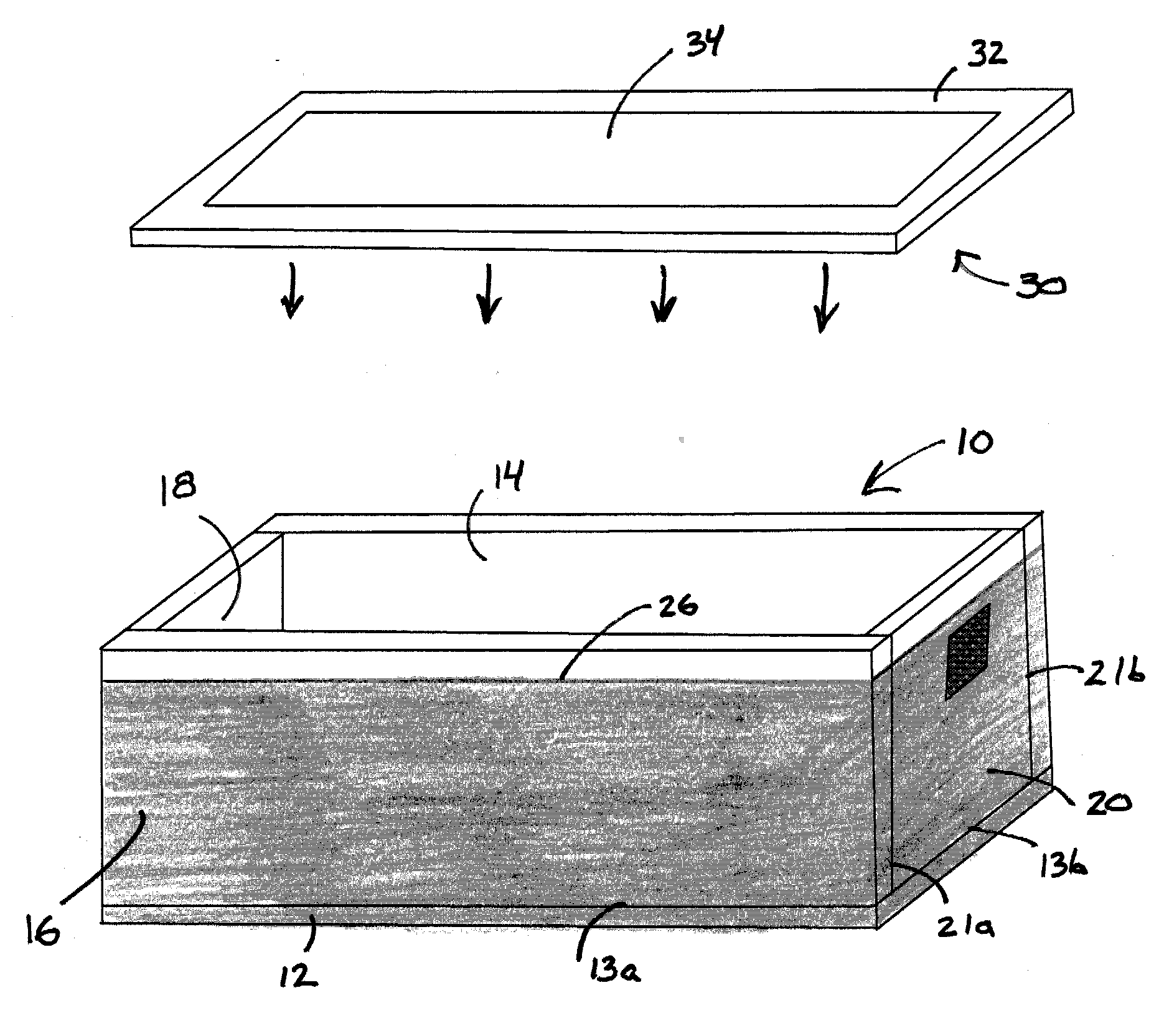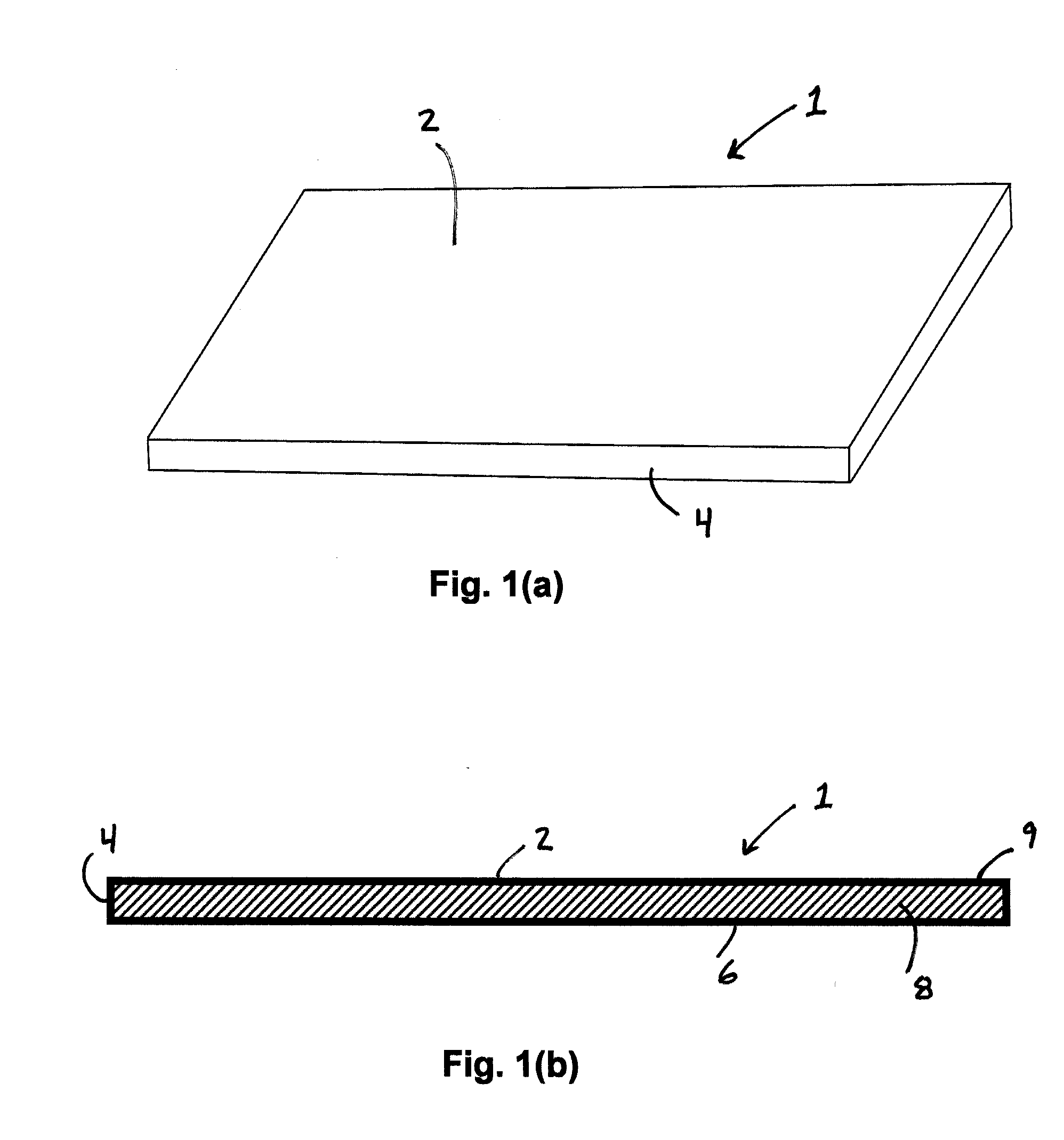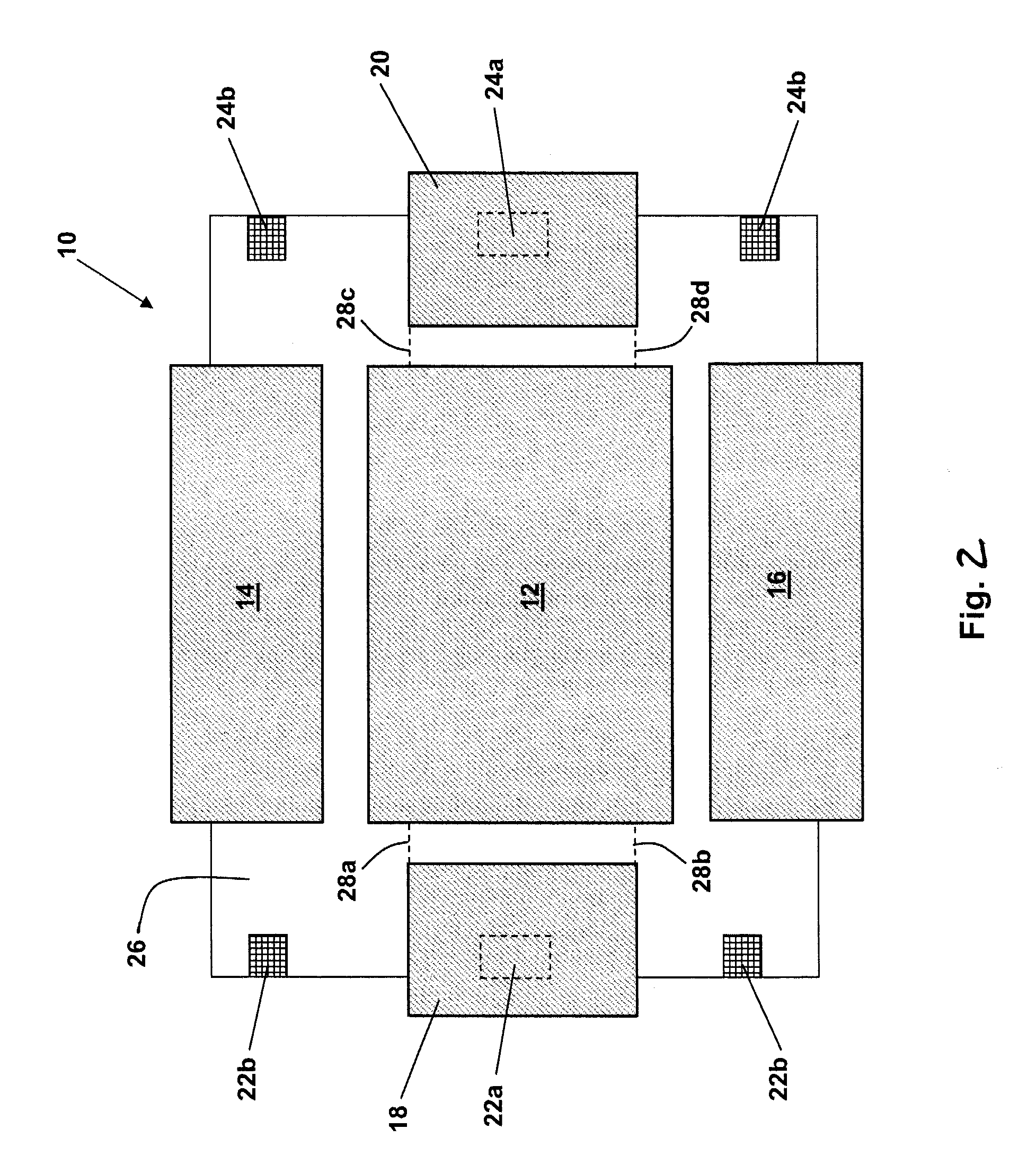Container insert incorporating thermally insulative panels
- Summary
- Abstract
- Description
- Claims
- Application Information
AI Technical Summary
Benefits of technology
Problems solved by technology
Method used
Image
Examples
Embodiment Construction
[0026]The present invention is directed to a container insert and a method for using the container insert to thermally insulate products contained therein. In this regard, the container insert includes thermally insulative panels that form the walls of the container insert.
[0027]FIGS. 1(a) and 1(b) illustrate a thermally insulative panel that can be utilized in the container insert. The thermally insulative panel 1 is preferably rigid such that the panel can form a rigid wall of the container insert. The panel 1 includes a top surface 2 and a mutually opposed bottom surface 6. The thermal insulation panel also includes a peripheral edge surface 4 extending along the perimeter of the insulation panel 1. In one embodiment, the peripheral edge surface 4 can have a thickness of from about ¼ inch to about 2 inches.
[0028]In one particularly preferred embodiment, the insulative panel 1 is a vacuum insulation panel (VIP). In this regard, the insulative panel 1 includes a thermally insulativ...
PUM
 Login to View More
Login to View More Abstract
Description
Claims
Application Information
 Login to View More
Login to View More - R&D
- Intellectual Property
- Life Sciences
- Materials
- Tech Scout
- Unparalleled Data Quality
- Higher Quality Content
- 60% Fewer Hallucinations
Browse by: Latest US Patents, China's latest patents, Technical Efficacy Thesaurus, Application Domain, Technology Topic, Popular Technical Reports.
© 2025 PatSnap. All rights reserved.Legal|Privacy policy|Modern Slavery Act Transparency Statement|Sitemap|About US| Contact US: help@patsnap.com



